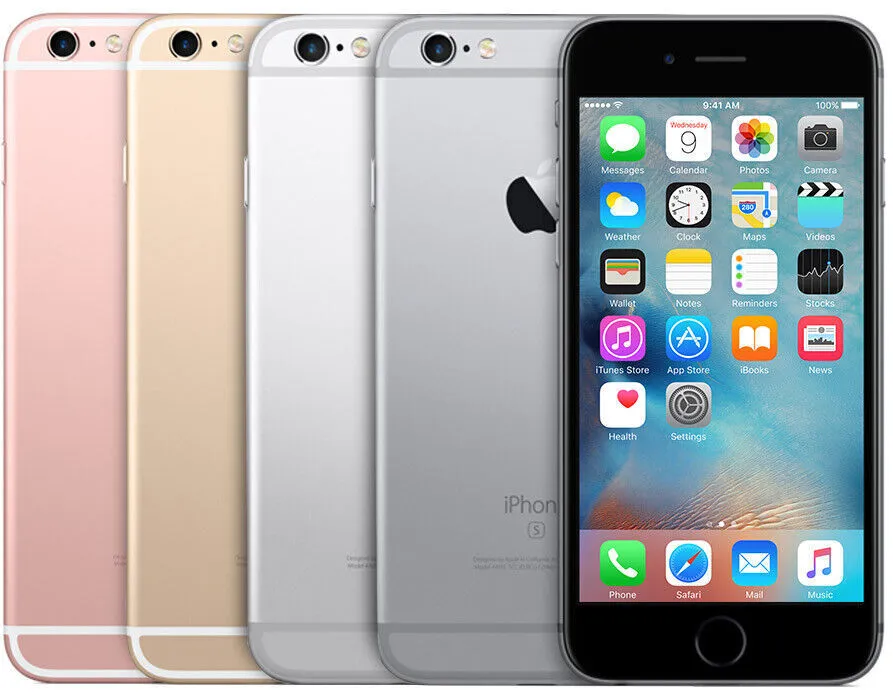The iPhone 6s and 6s Plus came out on September 19, 2015. They were a big upgrade from the previous models. This release was a turning point in smartphone design and technology. The iPhone 6s and 6s Plus were the ninth generation of iPhones and brought in new features like 3D Touch, Live Photos, and better camera capabilities. The phones were made from durable materials and had improved camera quality. These changes in hardware and software made these models very popular among users. They were a significant step forward in smartphone technology.

iPhone 6s and 6s Plus: Release Timeline
Announcement and Pre-orders
Apple announced the iPhone 6s and 6s Plus on September 9, 2015. Pre-orders for both models began on September 12th.
Official Release
Both the iPhone 6s and iPhone 6s Plus officially hit the shelves on September 25, 2015. They were initially available in 12 countries, with more markets added in the following weeks.
Initial Availability
| Country | Release Date |
|---|---|
| Australia | September 25, 2015 |
| Canada | September 25, 2015 |
| China | September 25, 2015 |
| France | September 25, 2015 |
| Germany | September 25, 2015 |
| Hong Kong | September 25, 2015 |
| Japan | September 25, 2015 |
| New Zealand | September 25, 2015 |
| Puerto Rico | September 25, 2015 |
| Singapore | September 25, 2015 |
| United Kingdom | September 25, 2015 |
| United States | September 25, 2015 |
Legacy
Despite their release several years ago, the iPhone 6s and 6s Plus remain popular among consumers who value their affordability and functionality. They continue to receive software updates, making them a viable option for those seeking a reliable iPhone without the high price tag of newer models.
Key Takeaways
- iPhone 6s and 6s Plus were released on September 19, 2015.
- They featured 3D Touch and 7000 series aluminum.
- The cameras included a 12 MP rear and 5 MP front.
Design and Hardware Innovations
The iPhone 6s and 6s Plus brought notable changes and new features. They combined a fresh look with powerful hardware to offer a better user experience.
Exterior Design and Colors
The iPhone 6s and 6s Plus have a sleek design similar to the iPhone 6. They are crafted from a stronger Series 7000 aluminum alloy, making them more durable. These models come in four colors: Rose Gold, Gold, Silver, and Space Gray. The smooth finish and clean lines contribute to a premium look and feel.
The dimensions are nearly the same as their predecessors, but the 6s models are slightly heavier due to the use of stronger materials.
Display and Touch Features
Both models feature a 4.7-inch and 5.5-inch Retina HD display with a pixel density of 326 PPI for the iPhone 6s and 401 PPI for the 6s Plus. The display quality is crisp and clear, enhancing the viewing experience.
A key innovation is 3D Touch. This feature enables the screen to recognize different levels of pressure, allowing new gestures like Peek and Pop. This adds a new layer of interaction, making the devices more versatile and efficient.
Performance and Storage Options
The iPhone 6s and 6s Plus are powered by the A9 chip, which offers significant performance improvements over the A8 chip used in previous models. They have 2GB of RAM, which enhances multitasking and overall speed.
They come in three storage options: 16GB, 64GB, and 128GB. Users can choose based on their needs for apps, photos, and videos. This variety ensures that there’s a model suitable for different usage scenarios.
Camera Capabilities
The camera capabilities of the iPhone 6s and 6s Plus are advanced and user-friendly. They feature a 12-megapixel rear camera that supports 4k video recording. This allows for high-resolution photos and videos with rich detail.
One standout feature is Live Photos. This innovative feature captures 1.5 seconds before and after a photo is taken, creating a short video clip. The front-facing camera is 5 megapixels, offering better selfies and video calls. Optical Image Stabilization (OIS) on the 6s Plus reduces blur, enhancing photo and video clarity.
Software Features and Connectivity
The iPhone 6s and 6s Plus introduced notable software features and impressive connectivity options. These features offered a better user experience and seamless integration with other Apple devices.
Operating System and Siri Integration
The iPhone 6s and 6s Plus launched with iOS 9. This operating system included proactive assistance, better multitasking, and improvements for built-in apps.
Siri, Apple’s virtual assistant, was more advanced on these models. Users could activate Siri hands-free by saying “Hey Siri.” This feature made it easier to get information or perform tasks without touching the phone.
Additionally, iOS 9 brought improved battery life and security features. The update also provided richer notifications and enhanced search capabilities. Apple frequently updated the software, ensuring users had access to the latest features and security improvements.
Network Compatibility and Wireless Technologies
The iPhone 6s and 6s Plus supported LTE Advanced, offering faster data speeds and better network reliability. These models were compatible with 4G LTE networks, making it ideal for streaming video or browsing the web quickly.
Both phones had improved Wi-Fi performance. This allowed faster download speeds and seamless streaming. Bluetooth 4.2 offered better connectivity with other devices such as speakers and headphones.
NFC support enabled the use of Apple Pay, which allowed users to make secure payments with a simple touch. This feature worked well with Touch ID for added security.
Apple Ecosystem and Accessories
The iPhone 6s and 6s Plus integrated smoothly into the Apple ecosystem. They worked well with other Apple devices like the Apple Watch and MacBook. Users could start a task on one device and finish it on another seamlessly.
Accessories like the Apple Watch enhanced the phone’s functionality. Users could receive notifications, track fitness, and more right from their wrist. These phones also supported various cases and keyboard accessories.
The Taptic Engine provided haptic feedback. This feature improved user interactions with the phone. Together, these elements created a cohesive experience for Apple users.







